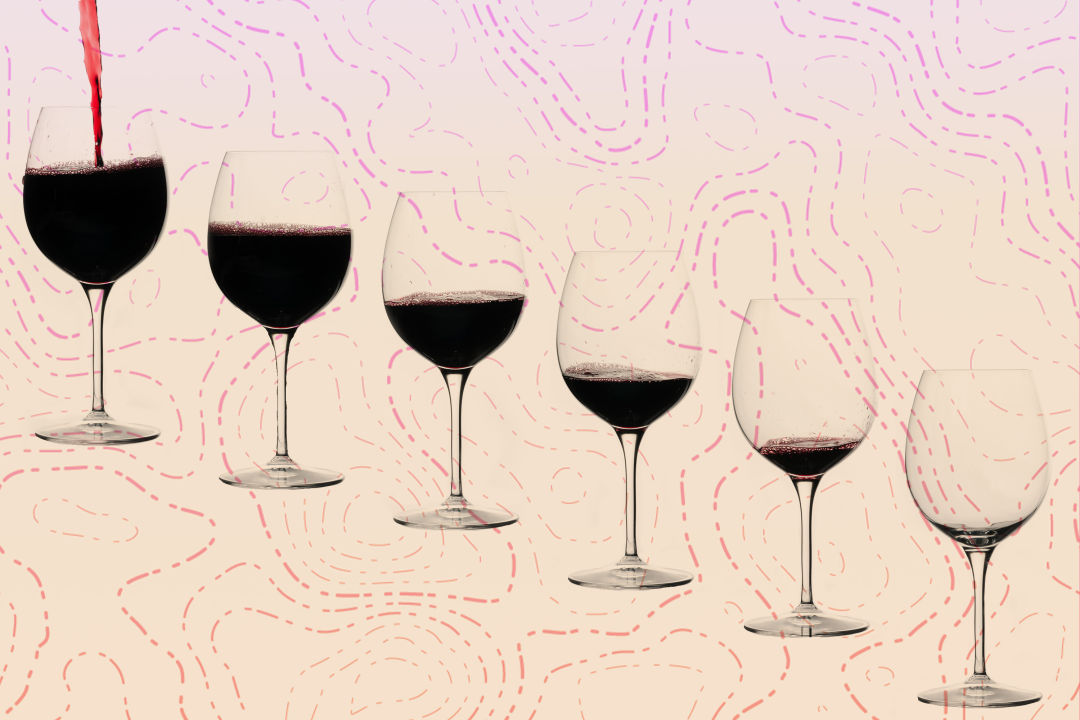Are Wine Pours Shrinking?

Image: Kari Perrin/Shutterstock
A startling 2022 article in the New York Post by Beth Landman claimed that many restaurants in New York had reduced their typical wine pour sizes from 6 or 5 ounces to just 4 and, on top of that, had raised their prices. Needless to say, patrons were outraged, and some even demanded a heavier pour.
Wine by the glass is a staple of nearly every restaurant. It allows the diner to enjoy wine with a meal without splashing out for a full bottle and it's particularly useful if one diner at the table wants red and another wants white.
It’s a good deal for the patron and it's also a major source of revenue for the establishment. A typical 750-milliliter bottle contains roughly 24 ounces of wine, so imagine a restaurant is able to pour four 6-ounce glasses of wine from a bottle. A general rule of thumb is that the price of a wine pour equals the cost of the bottle. So a $10 bottle equates to a $10 glass. If the restaurant gets four pours out of one bottle, that's a 400 percent markup. Not bad.
In the past, custom dictated that the wine be poured at the table to ensure the customer received the proper wine. That trend has since disappeared and glasses are now filled at the bar. It didn’t take long for restaurateurs to realize that pouring too much was causing them to miss out on profits, so they provided stemware with special marks, often a restaurant logo, to indicate the level to which the bartender should fill the glass.
For years, the quality of wine by the glass would vary with the price, but the pour was always consistent. I remember Legal Sea Foods in Boston creating a 5-ounce flute-style glass that was thick at the base so the server could fill the glass all the way to the top. It looked great to the customer, but it still only contained 5 ounces of wine.
As more people developed a wine palate, glassware changed accordingly. The 8-ounce glass became passé and was supplanted by the 12- or even 16-ounce glass. However, restaurateurs soon realized that 6 ounces of wine in a 12-ounce glass looks paltry, so that brought about the mini decanter. Six ounces of wine was presented to the customer in a decanter to pour, and there was no way to argue about being shortchanged because you were pouring it yourself. Variations on all these strategies abound to this day. It is not uncommon to see 6- or 9-ounce options, or even 3-ounce tasting portions for those who want to try a wine that might be too expensive for them otherwise.
I surveyed a few of our wine-themed restaurants to find out how they handle pours. Sarasota's Café Gabbiano and Venice's Zebra Lounge serve 6-ounce pours. Michael’s on East, meanwhile, serves 5 ounces, with an 8.5-ounce option called a quartino that is roughly one third of a 750-milliliter bottle.
In most restaurants, the quantity of the pour is not listed unless there are two or more options. Should you ask about the quantity of the wine pour before ordering? It is certainly appropriate.
Bob McGinn has spent his entire career in the wine industry—forming wine clubs, working in wine sales marketing and engaging in all facets of the winemaking process, including vine management, fermentation and yeast analysis. He has developed wine programs for companies such as Marriott, Sheraton and Smith & Wollensky, and consults with local restaurants. You can read more of McGinn’s work at gulfcoastwinejournal.com.